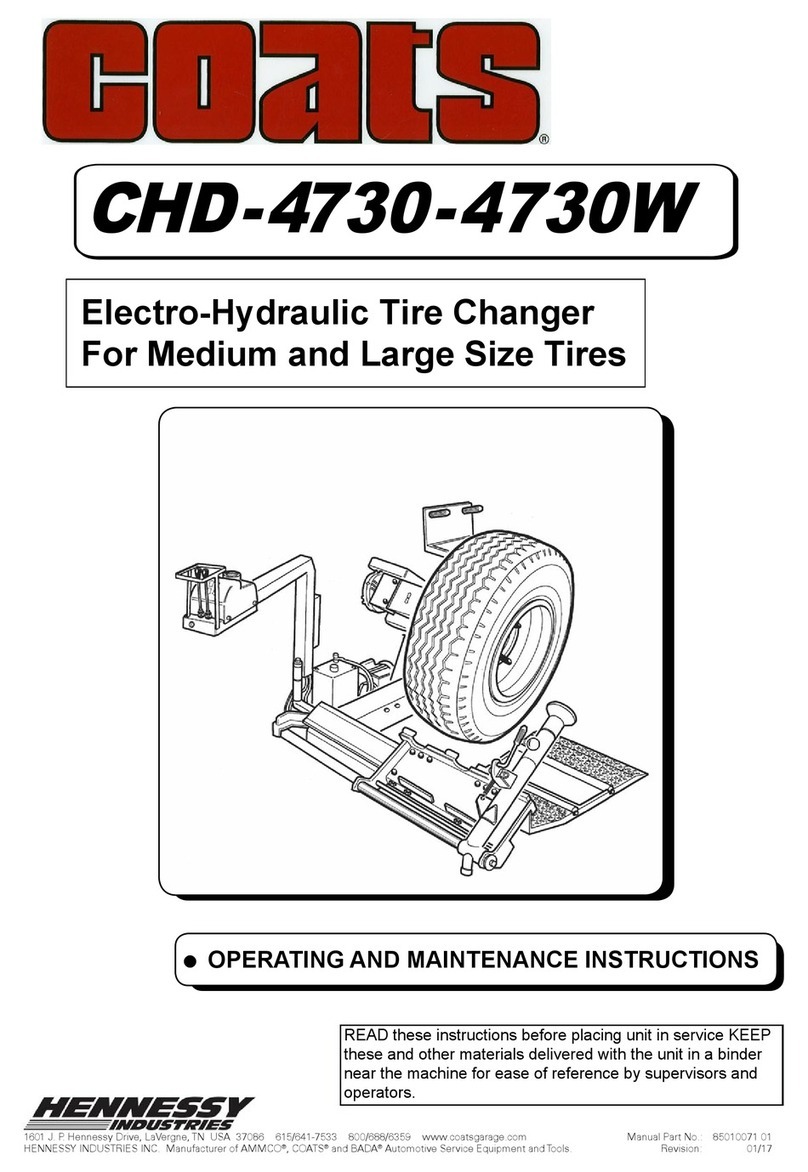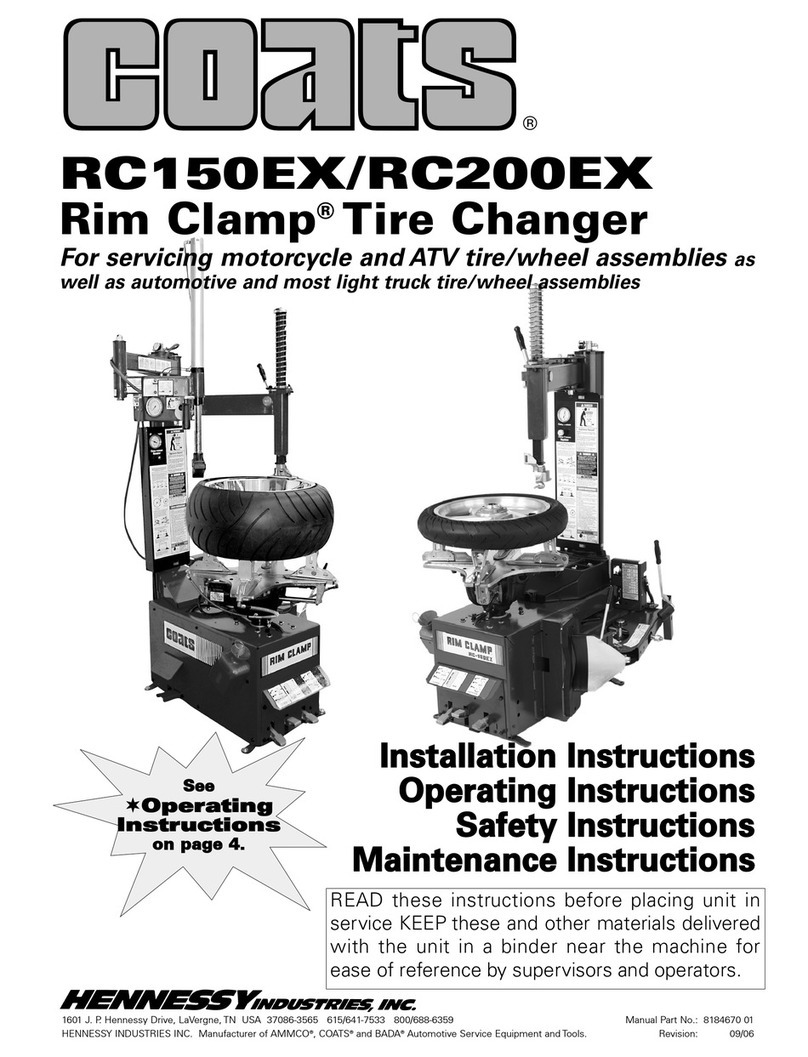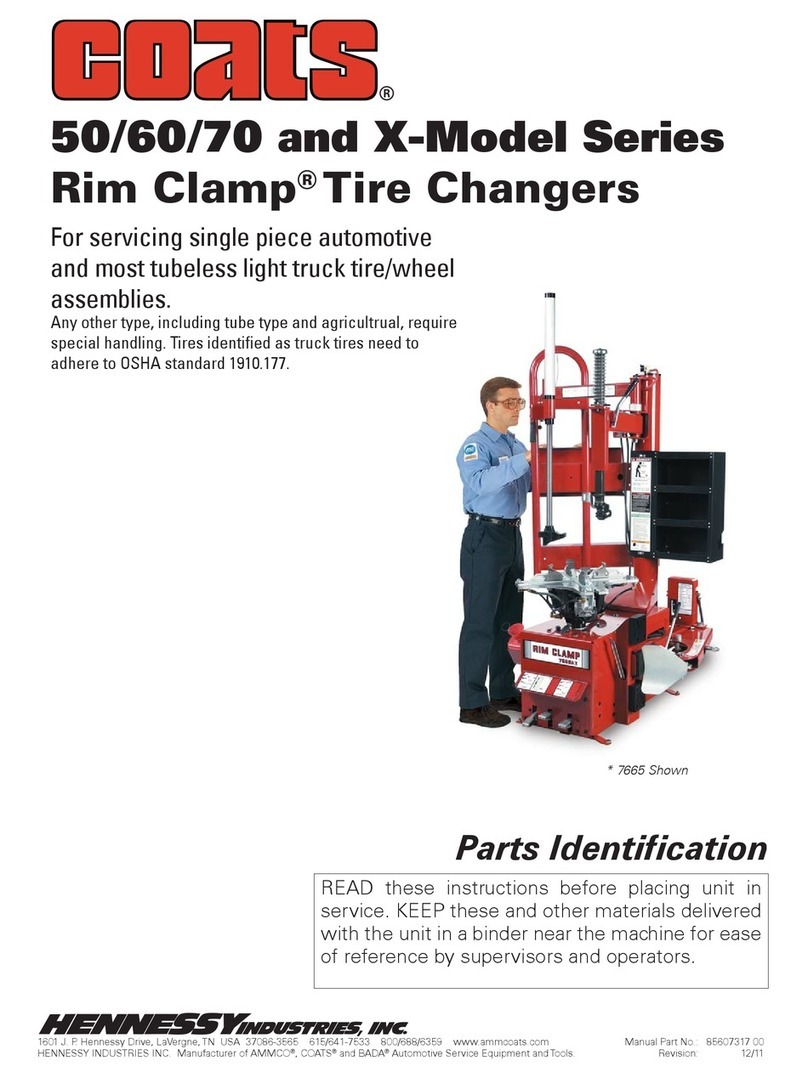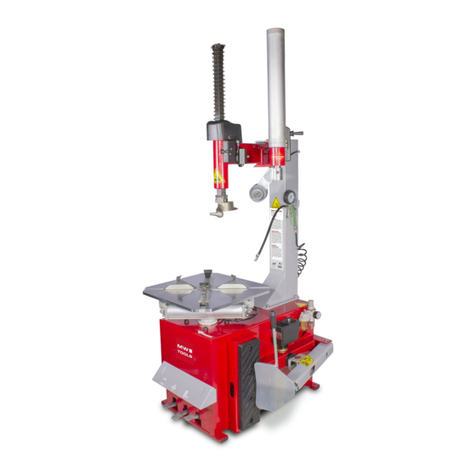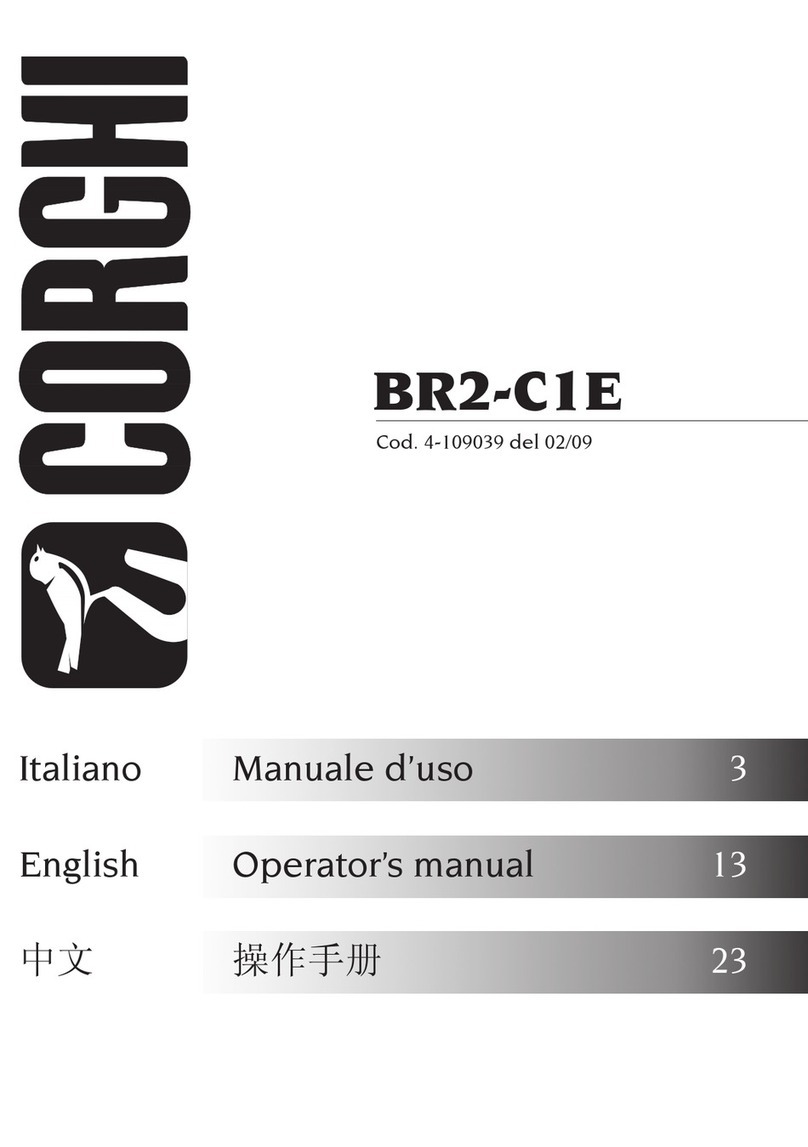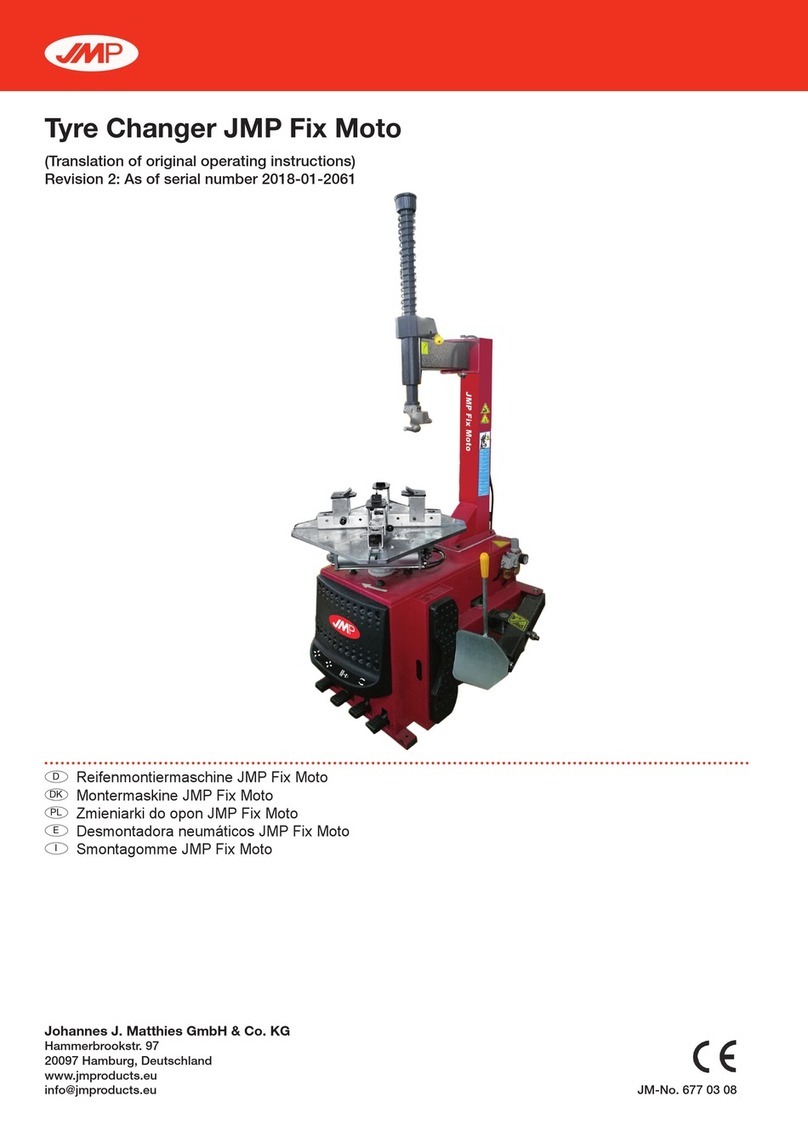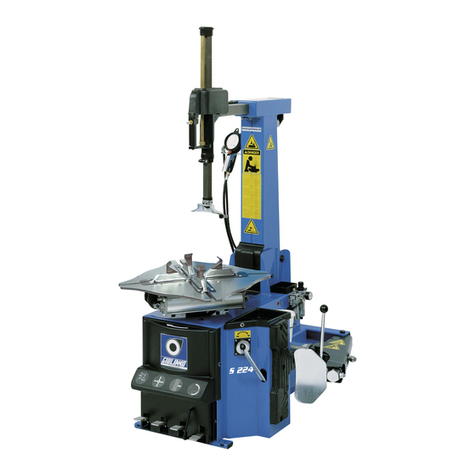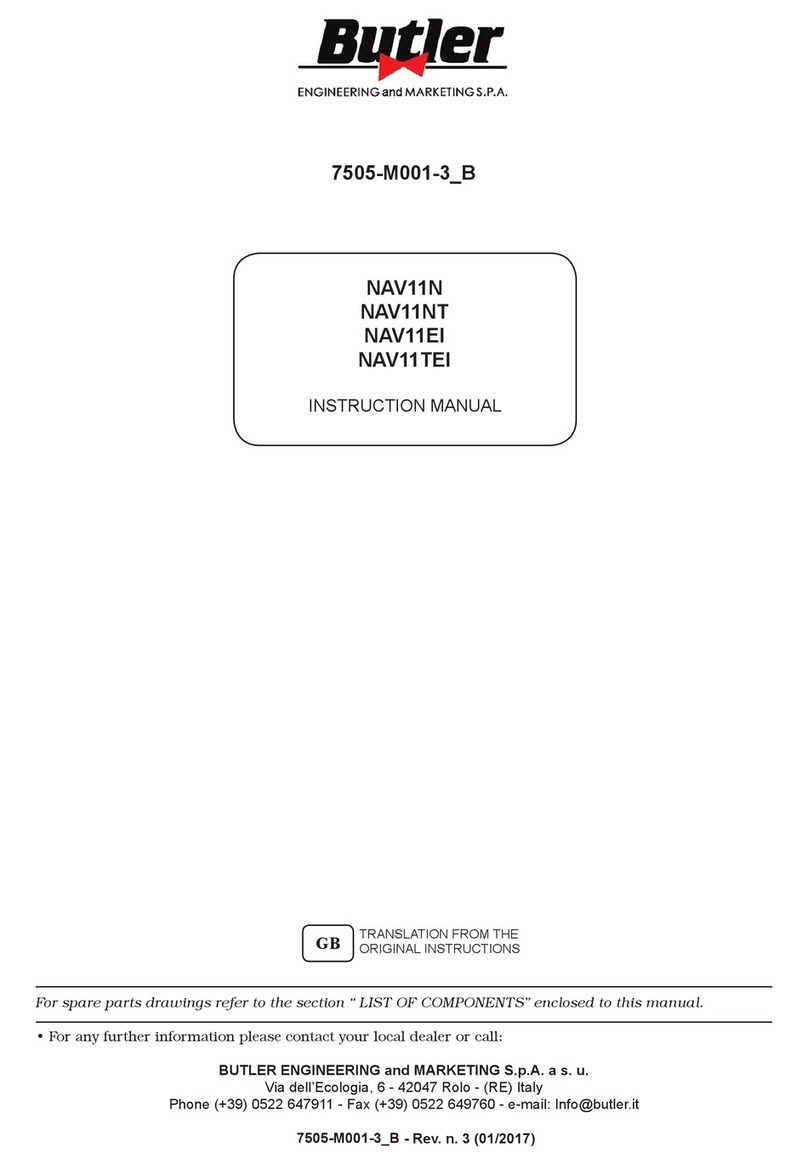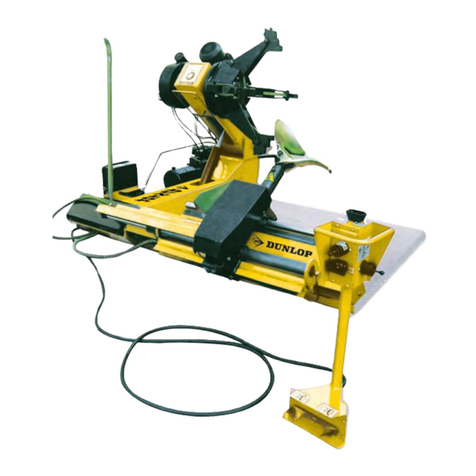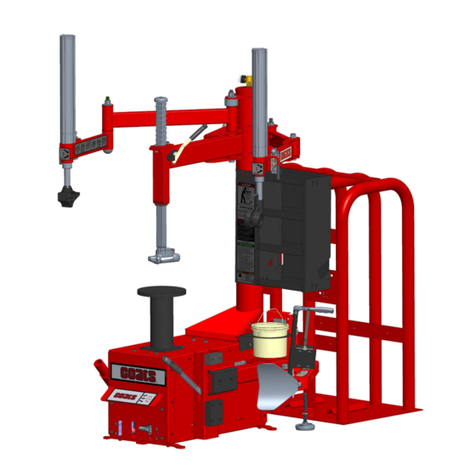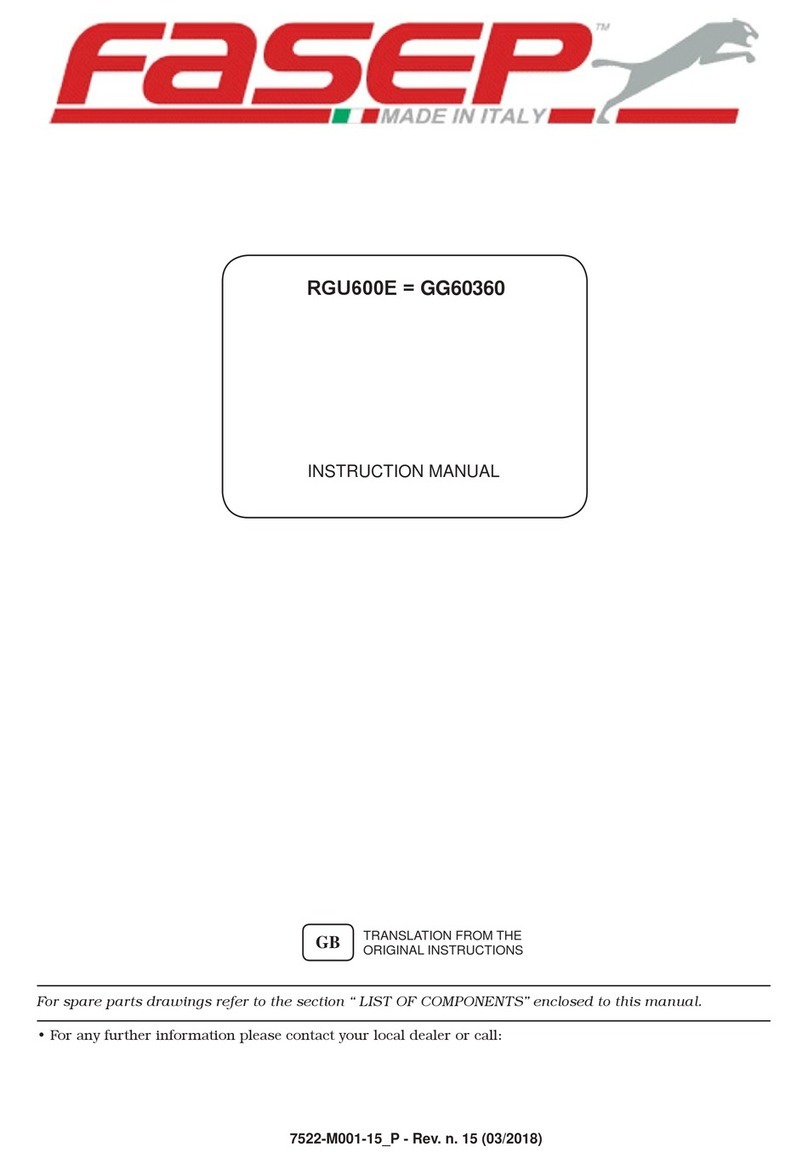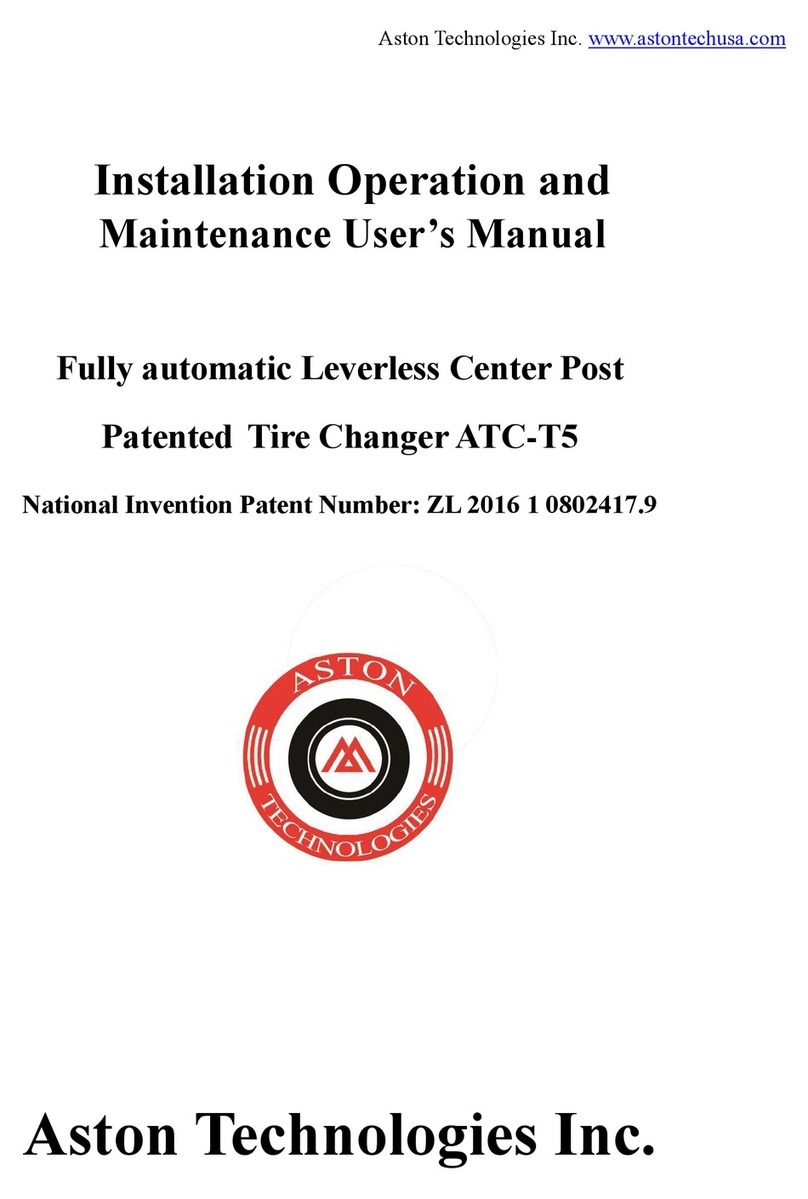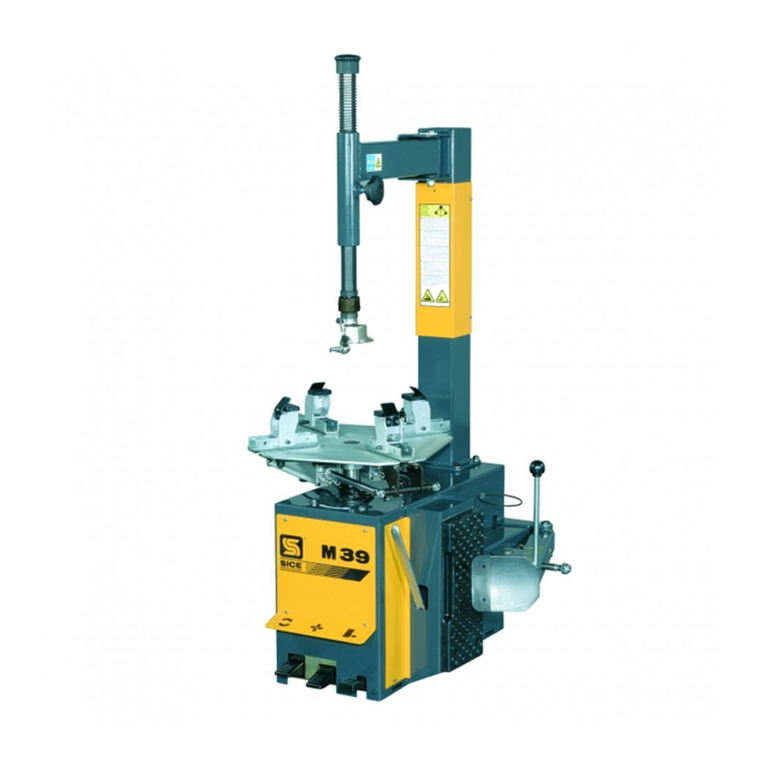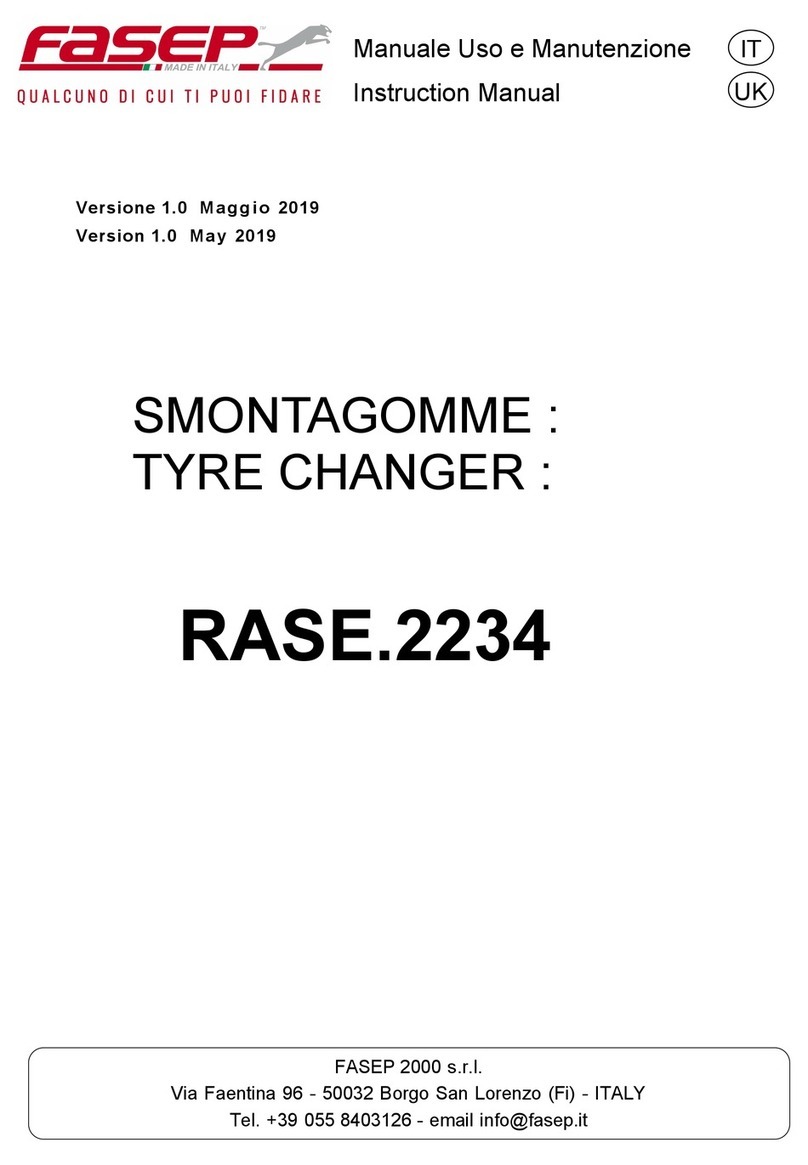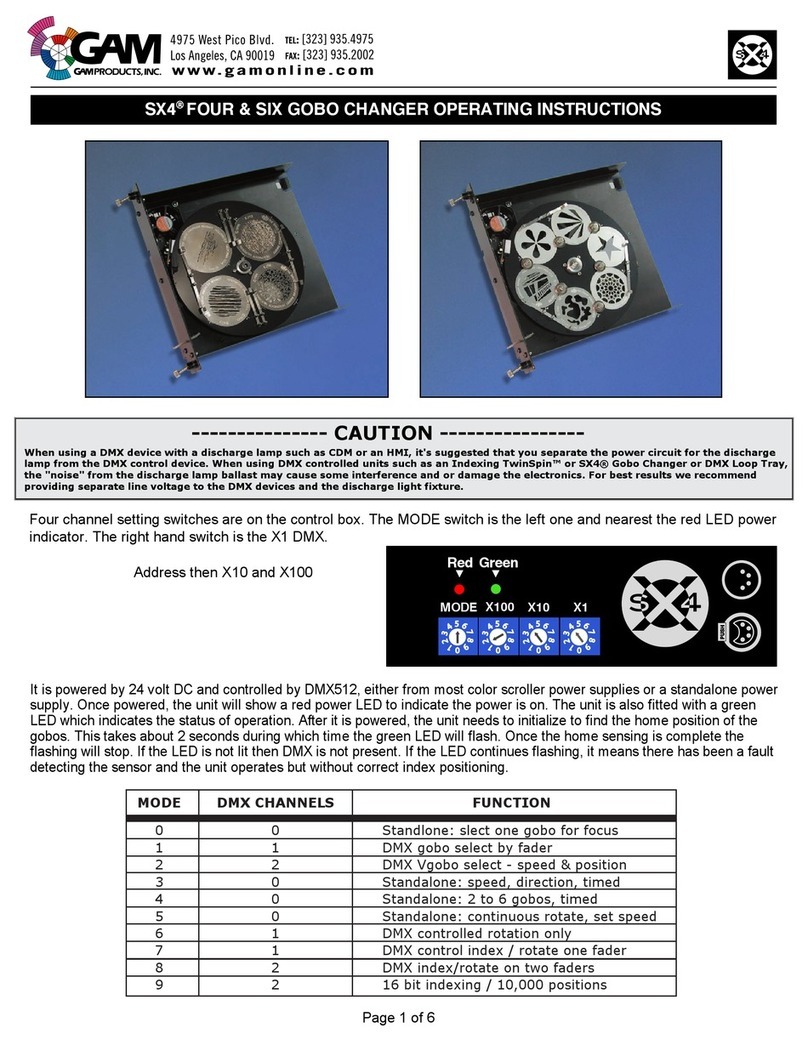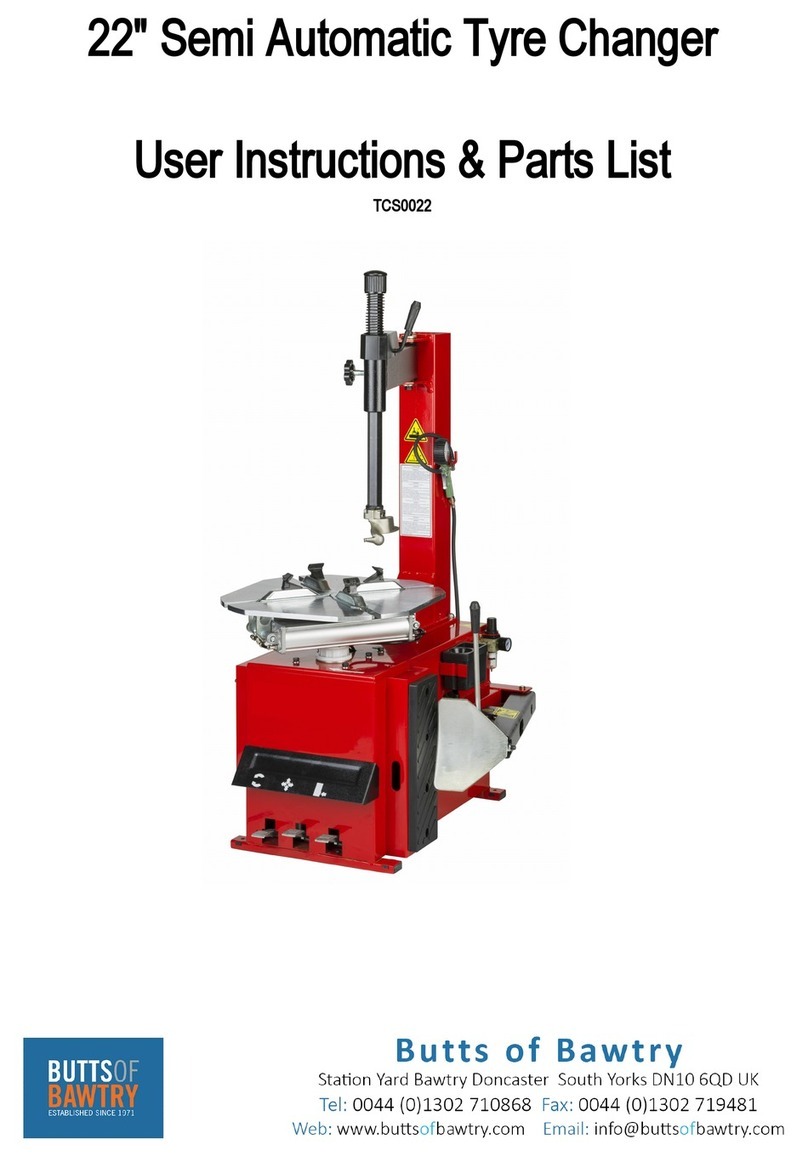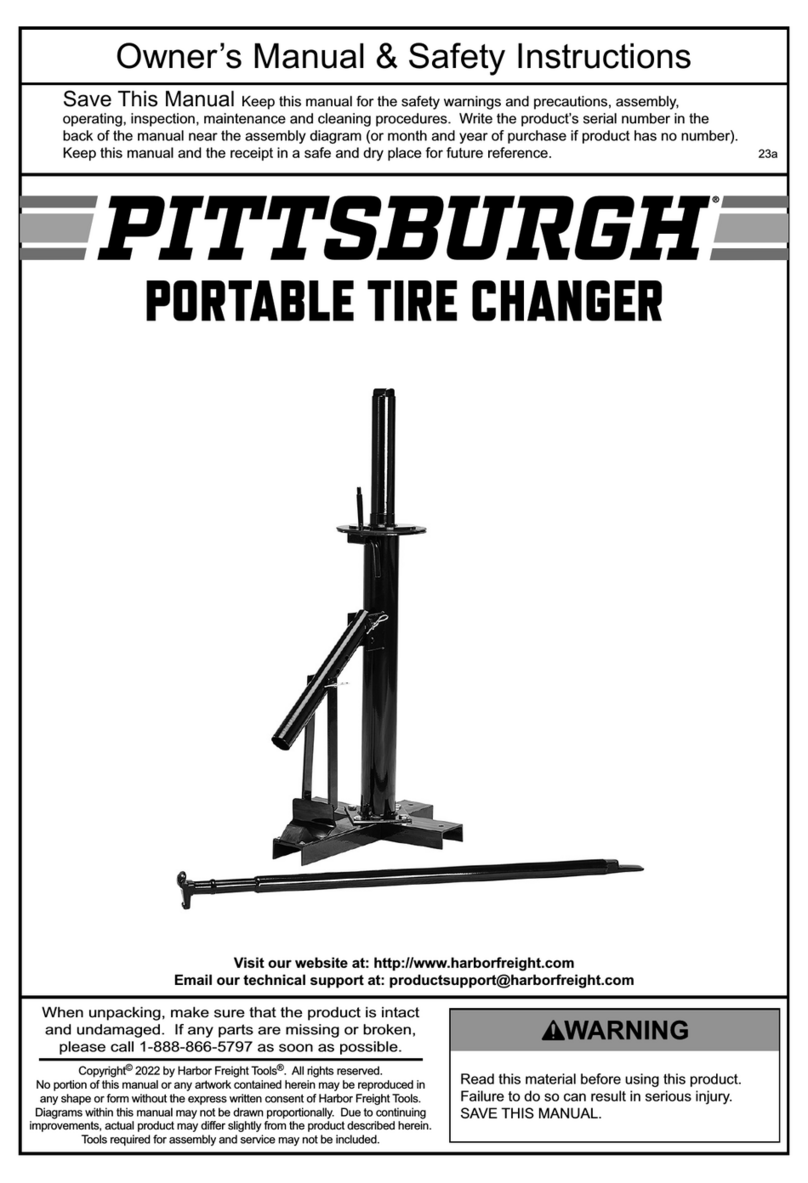
4 • Important: Always read and follow the operating instructions.
Operating Instructions
This unit must be properly operated and properly
maintained to help avoid accidents that could damage
the unit and injure the operator or bystanders. This sec-
tion of the Operating Instructions manual reviews ba-
sic operations and use of controls. These instructions
should be reviewed with all employees before they are
allowed to work with the machine. Keep these instruc-
tions near the machine for easy reference.
Tire Bead Loosening and Demounting
This machine may operate differently from
machines you have previously operated.
Practice with a regular steel wheel and tire
combination to familiarize yourself with the
machine’s operation and function.
Note Remember to remove all weights from both sides
of the wheel. Weights left on backside of wheel may
cause the wheel to be clamped unleveled. This may
result in the combination Duckhead® mount/demount
tool contacting the rim causing scratches. On alloy
wheels, always rotate the wheel one turn after setting
the Duckhead tool to insure proper wheel chucking.
Note Always review with the owner any nicks and
scratches on expensive wheel and tire combinations
prior to servicing.
Note Review the performance wheel section of this
manual prior to servicing performance tire/wheel com-
binations.
Loosening the beads on a partially or fully
inflated tire is unsafe and causes excess
movement and friction against the bumper
pads and excessive wear on pivots. Deflate
the tire completely to prolong the life of
your machine.
1. Deflate the tire completely by removing the valve
core from the valve stem (figure 1). Be cautious and do
not smoke as a flammable gas could have been intro-
duced into the tire at some time.
Figure 1 - Remove Valve Core to Deflate Tire
Tires are always installed and removed from
the rim’s narrow side.
Note Always loosen the bead on the narrow side of
the wheel’s drop center first. See figure 2 for more in-
formation on the drop center.
Figure 2 - Determine Narrow Side of Wheel
Note The clamps on the tabletop may extend beyond
the tabletop itself.To avoid damaging the clamps, move
them to their full inward position before positioning a
tire for bead loosening.
Note Use extra care in positioning the bead loosener
shoe on larger wheels/tires, and on alloy wheels. Make
sure the shoe rests next to but not on the rim, and not
on the tire sidewall.
2. Pull the bead loosener shoe away from the ma-
chine and roll wheel into position.The valve stem should
be in the 2 o’clock position to accommodate a possible
asymmetric safety hump type rim. Position the bead
loosener shoe against the tire next to, but not on, the
rim. Press the loosener pedal to actuate the shoe and
loosen the bead. It may be necessary to loosen the
bead in multiple locations around the tire (figure 3).
Figure 3 - Position Tire and Bead Loosener Shoe
3. Turn the wheel around and repeat loosening pro-
cedure on the other side of the wheel (figure 4). Note
that the valve is placed at 2 o’clock for the initial loosen-
ing procedure to accommodate a possible asymmetric
safety hump type rim.
Narrow Side
Long Side
Drop Center
Valve Stem
